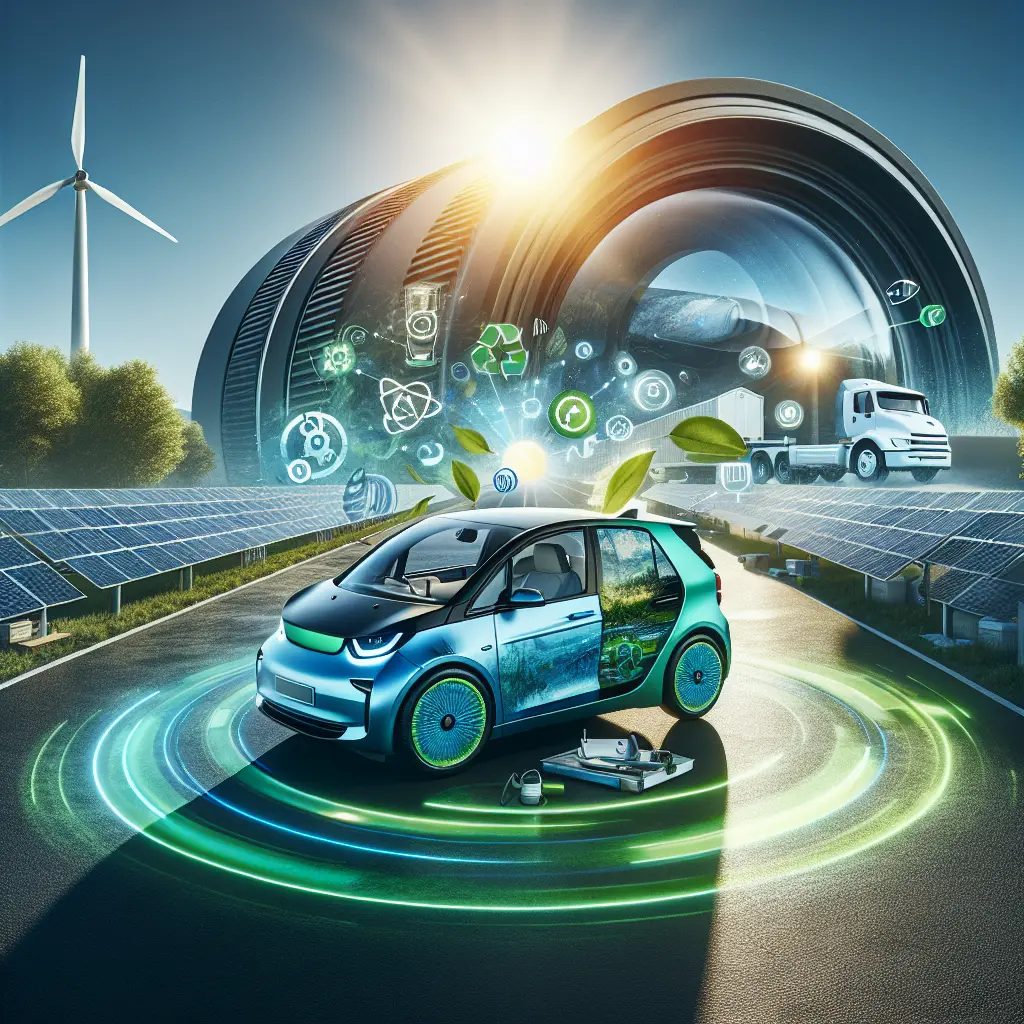In the world of automotive innovation, Tesla stands out not just for its cutting-edge technology but also for its commitment to sustainability. As the world becomes increasingly aware of the importance of environmental stewardship, Tesla's role in promoting eco-friendly practices has become more significant than ever. This blog post will delve into how Tesla is spearheading the movement towards a more sustainable future through various initiatives and technologies, focusing on their impact on environmental responsibility.
Tesla's core mission revolves around accelerating the world's transition to sustainable energy. This is evident not only in their product line of electric vehicles (EVs) but also in their broader business practices. Tesla's approach to sustainability is multifaceted, involving innovations in battery technology, renewable energy, and manufacturing processes.
One of the key areas where Tesla has made significant strides is in reducing the carbon footprint of their vehicles. Traditional combustion engines are known for their significant emissions, but Tesla’s electric vehicles offer a zero-emission alternative. The Tesla Model 3 Long Range RWD, recently reintroduced in the U.S. market at a price point of $42,490, is a prime example of how Tesla is making sustainable vehicles more accessible to the public. This move not only reinforces Tesla's commitment to environmental responsibility but also broadens the base for eco-friendly cars source.
Tesla's commitment to sustainability extends beyond just their vehicles. Their manufacturing processes are also designed with environmental responsibility in mind. Tesla factories are increasingly using renewable energy sources. The integration of solar panels and the use of Tesla's own solar products demonstrate how the company is reducing its reliance on non-renewable power sources, thereby minimizing its overall environmental impact.
Furthermore, Tesla’s dedication to recycling and reusing materials showcases another aspect of their sustainable practices. Their battery recycling program is a step towards reducing waste and enhancing the sustainability of their products throughout their lifecycle.
Tesla Green Technology and Renewable Energy
Tesla's innovation in green technology is perhaps most visible in their work with battery technology and energy storage solutions. Tesla batteries are designed to have a long life, and they are also being developed to be fully recyclable, which is crucial for reducing environmental waste and promoting sustainability in electric vehicles.
In addition to vehicle batteries, Tesla is also a major player in the renewable energy sector through its solar panels and Solar Roof products. These technologies enable homeowners and businesses to generate their own clean energy, thus reducing reliance on fossil fuels and decreasing greenhouse gas emissions source.
The shift towards electric vehicles is a critical element in reducing global carbon emissions. Tesla’s range of EVs, known for their high energy efficiency, plays a pivotal role in this transition. By improving the range and performance of their vehicles while ensuring that they are produced in an environmentally responsible manner, Tesla is setting new standards for what it means to be an eco-friendly car manufacturer.
Moreover, Tesla's advancements in energy efficiency are not confined to its vehicles. The company’s development of energy-efficient solutions extends to its entire ecosystem, including how energy is stored and used in homes and businesses.
Challenges and Criticisms
Despite these efforts, Tesla faces challenges and criticisms concerning its environmental impact. The recent news that China’s BYD is catching up with Tesla in sales poses a competitive threat but also signals a positive shift towards more widespread adoption of eco-friendly vehicles globally source.
Additionally, Tesla’s CEO Elon Musk has recently faced criticism for political endorsements and operational decisions that could potentially affect the brand’s image and focus on sustainability goals. Such instances highlight the complex interplay between business practices, public perception, and environmental responsibility source.
Tesla's influence in promoting environmental responsibility through sustainable practices and green technology is undeniable. As they continue to innovate and push the boundaries of what is possible with electric vehicles and renewable energy, they set an example for other companies to follow.
Despite facing challenges along the way, Tesla's commitment to reducing its carbon footprint and leading the charge on electric vehicles sustainability remains steadfast. By focusing on energy efficiency and embracing renewable energy sources, Tesla not only contributes to environmental conservation but also drives the global transition towards more sustainable energy solutions.
As we look to the future, it is clear that Tesla will continue to play a pivotal role in shaping the landscape of eco-friendly transportation and sustainable energy production. Let us hope that their journey inspires more companies to prioritize planet over profit, ensuring a healthier, more sustainable world for future generations.










Leave a Comment